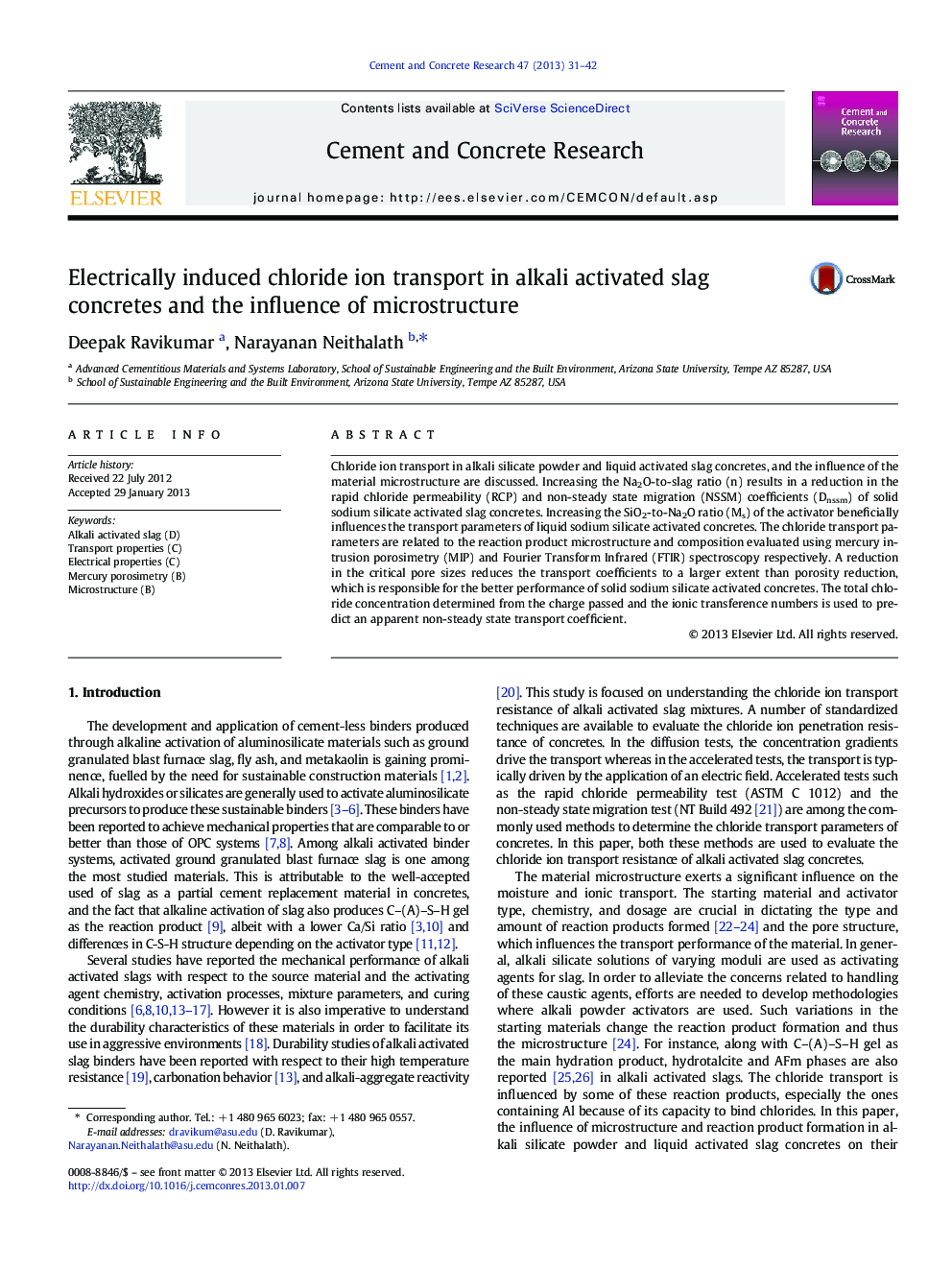| Article ID | Journal | Published Year | Pages | File Type |
|---|---|---|---|---|
| 1456489 | Cement and Concrete Research | 2013 | 12 Pages |
Chloride ion transport in alkali silicate powder and liquid activated slag concretes, and the influence of the material microstructure are discussed. Increasing the Na2O-to-slag ratio (n) results in a reduction in the rapid chloride permeability (RCP) and non-steady state migration (NSSM) coefficients (Dnssm) of solid sodium silicate activated slag concretes. Increasing the SiO2-to-Na2O ratio (Ms) of the activator beneficially influences the transport parameters of liquid sodium silicate activated concretes. The chloride transport parameters are related to the reaction product microstructure and composition evaluated using mercury intrusion porosimetry (MIP) and Fourier Transform Infrared (FTIR) spectroscopy respectively. A reduction in the critical pore sizes reduces the transport coefficients to a larger extent than porosity reduction, which is responsible for the better performance of solid sodium silicate activated concretes. The total chloride concentration determined from the charge passed and the ionic transference numbers is used to predict an apparent non-steady state transport coefficient.
